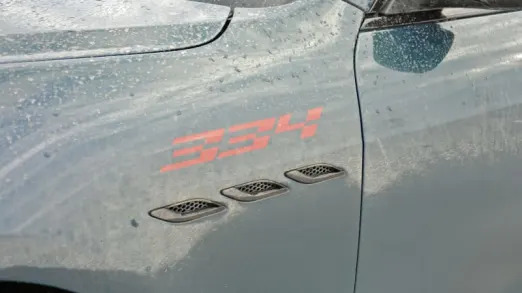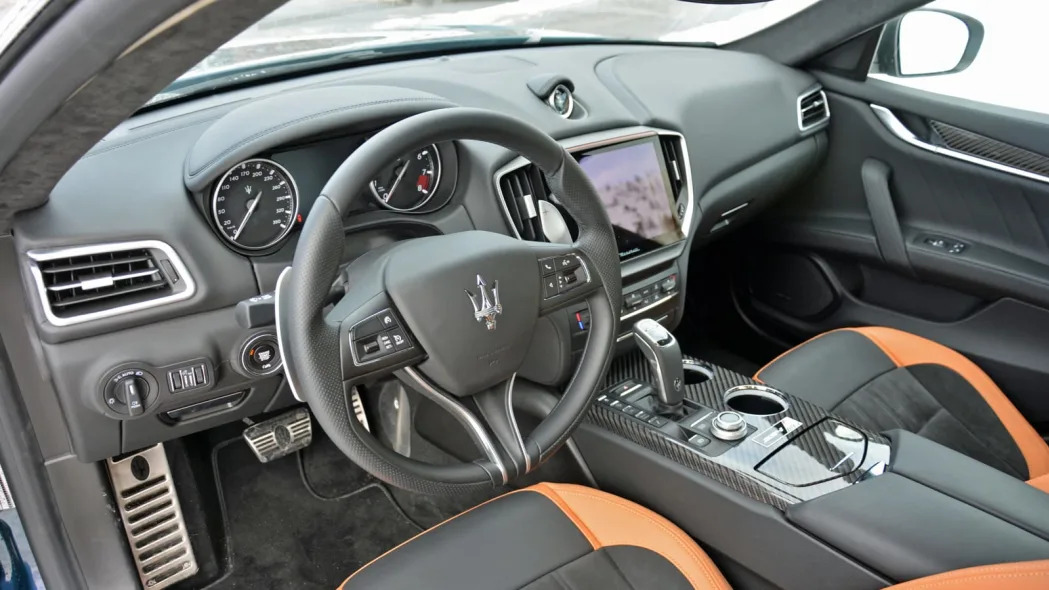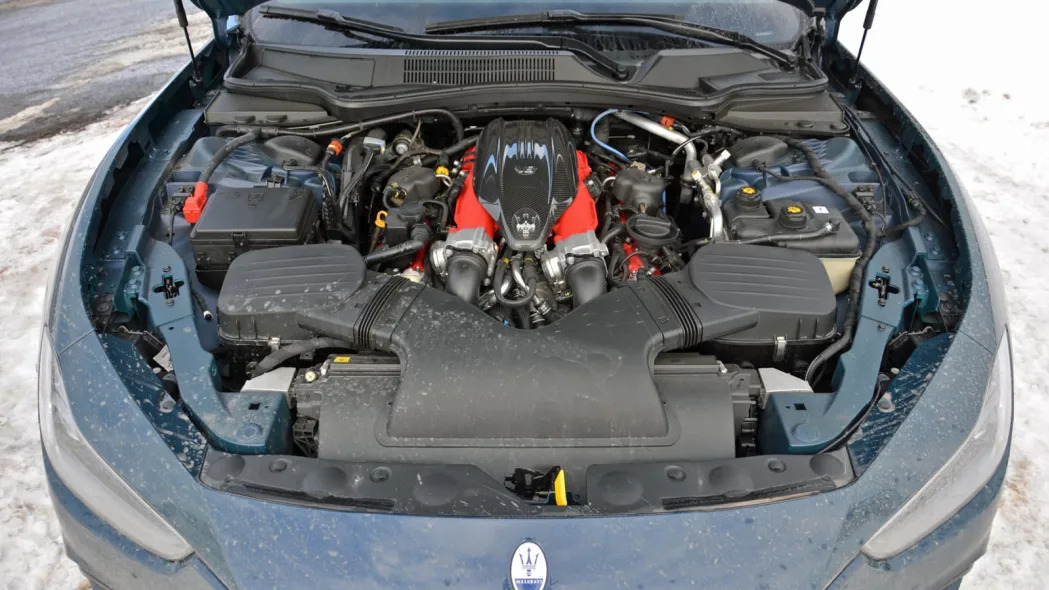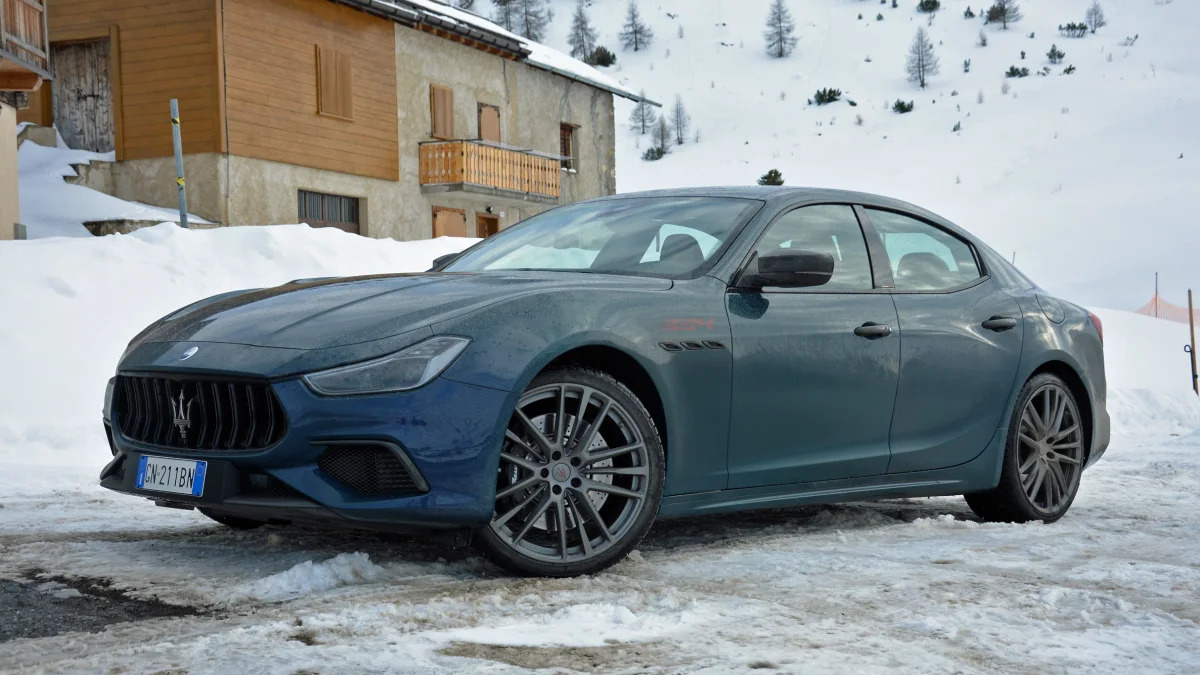BORMIO, Italy – Maserati has sold more than 100,000 cars with a V8 engine. Its smallest V8s had 3.2 liters of displacement; its biggest were 4.9-liter units. Its first V8 powered the rare, short-lived V8RI race car released in 1935; its final V8s will be built in December 2023 for the Ghibli, Quattroporte and Levante.
After that, the curtains come down. Officially, the Italian brand explains its new, 3.0-liter Nettuno V6 (a brilliant engine that’s twin-turbocharged to 621 horsepower and 538 pound-feet of torque in the MC20) leaves nothing to be desired in terms of performance. Privately, insiders also cite looming emissions regulations in key markets as a reason for finally hopping on the downsizing train.
Will the V8 ever come back? “Never say never,” I’m told, though a return isn’t planned as of this writing. To hell with heritage; the cost of summoning a dark cloud of disapproval from regulators around the world outweighs whatever benefits Maserati would reap by saving the V8 in the name of tradition.
It’s the end of the V8 era, then, and Maserati is commemorating it with two limited-edition models called Ghibli 334 Ultima and Levante V8 Ultima, respectively. The Quattroporte is available with a V8 as well, but a special-edition version of the big sedan isn’t in the pipeline because Maserati wanted to focus on its better-selling models. In both cases, the Italian company has saved the best for last.


The Ghibli 334 Ultima stands out with an edition-specific color called Persia Blu, 21-inch Orione wheels, Pirelli P-Zero tires made using a stickier compound, and several carbon fiber bits (such as the door mirror caps) that save about 55 pounds. The Rubino Red “334” logo painted on each fender denotes the new top speed: 334 kilometers per hour, which represents about 207 miles per hour and makes the 334 faster than the Trofeo it’s based on by 5 mph — it’s also the fastest sedan on the market. The previous title holder, Bentley’s Continental Flying Spur, tops out at 333 kph, which also converts to about 207 mph, but Maserati is Italian and uses the metric system to measure its bragging rights. The sedan’s 0-to-62-mph time drops from 4.3 to 3.9 seconds, but the engine remains the same: It’s the tried-and-true 3.8 rated at 572 horsepower and 538 pound-feet of torque.
Inside, the 334 Ultima comes with two-tone Pale Terracotta and black upholstery that echoes some of Maserati’s classic models without going full-on retro. It’s a distinctive look the Ghibli wears well.
Production is limited to 103 units globally, including 60 examples earmarked for the American market. Why 103? It’s a tribute to the 5000 GT, the first V8-powered street-legal Maserati. Released in 1959, and labeled Tipo 103 internally, it was developed at the request of the Shah of Iran after he asked for a 3500GT with more power. The 334’s exterior color is a tribute to this model as well.
Levante buyers have two V8 Ultima configurations to choose from. The first looks a lot like the Ghibli 334 Ultima, though it’s painted in a different shade of blue called Blu Royale. The second is finished in a shade of black named Nero Assoluto. Both receive the same two-tone interior as the final Ghibli, and each color is limited to 103 units for a total of 206 cars, including 87 headed to the United States.

Even fitted with snow tires, the Ghibli 334 Ultima provides an entertaining driving experience on the cold, twisty road separating Bormio from Livigno in the Italian Alps. The interior is OK; it doesn’t take a great deal of poking and prodding to find cheaper plastics or switchgear shared with a Jeep, but it’s not terrible, and the two-tone upholstery spruces it up. That’s not the point, though. The real gem here is the engine.
Maserati understandably stopped advertising its V8’s link to Ferrari when its former sister company said “ciao, ragazzi” and became a rival, but the twin-turbocharged, 90-degree V8 (called F154 internally) is related to the engine that the Prancing Horse has put in some of its models since the 2010s. You’ve got more power under your right foot in the 334 Ultima than in the old California T. The engines aren’t identical, however: Maserati’s version of it notably uses a wet sump and a cross-plane crankshaft.
In many ways, the Ghibli 334 Ultima feels like it was cast in the same mold as the old-school Italian cars that Hollywood romanticized for decades, when television ads for cars featured high-speed chases and electric motors powered the windows, not the wheels. It’s not as high-tech, as sharp to drive, or as powerful as the BMW M5, but it doesn’t need to be; it wasn’t developed as a pastiche of Bavaria’s finest. Instead, it embodies Maserati’s own idea of a sport sedan with entertaining, rear-wheel-drive handling and the elegance you’d expect from a car with a big trident logo in its grille.
Big power requires big brakes, and the 334’s are up to the task, though the stainless-steel pedal’s feel leans toward the vague side of the scale. The suspension’s firmness varies depending on the drive mode selected: Corsa makes the ride noticeably firmer, though it’s best (and most safely) enjoyed on a dry, traffic-free road, while Sport represents a nice middle ground for daily driving. Don’t look for a clutch pedal, as the only gearbox offered is an eight-speed automatic linked to a pair of steering wheel-mounted paddles.

I’d bet you a negroni that, in 20 years, the Ghibli Trofeo will be celebrated as one of the most underrated sport sedans of its era, and the 334 Ultima will be a collector’s item — one of those “if you know, you know” cars enthusiasts geek out over, much to the befuddlement of those who don’t understand what’s special about it. It’s a fitting sendoff to the engine that made Maserati what it is today.
From a technical perspective, consigning the V8 to the pantheon of automotive history makes sense. It’s not the first or the last automotive feature canceled out by progress. Changing the ignition points is no longer part of routine maintenance on any new car, and you no longer need to carry spare inner tubes. Maserati hasn’t made a car with an armada of choke-operated Weber carburetors in decades, and it doesn’t need eight cylinders to build a 580-horsepower car. Forced induction can handle it.
Innovation also shapes phones, garden tools, and microwaves, but enthusiasts don’t lump cars into the “appliance” column — and Maserati certainly caters to buyers with at least a small percentage of passion in their blood. From the sound when you approach the redline in a long tunnel to the way it accelerates, a V8 behaves differently than a V6, and these characteristics in turn shape the driving experience. They give the car a personality (some would go as far as calling it a soul) and, from the vantage point of someone whose brain is soaking in synthetic engine oil, make it more than a heavy, moving lump of metal, plastic, and glass. Maserati will keep building the fast, fun-to-drive cars it’s known for with a V6 — the new GranTurismo makes a great case for this, but the V8 will be missed.
We don’t need a crystal ball to predict what’s next. Maserati told Autoblog that the Ghibli and the Quattroporte will die with the V8 at the end of 2023, and the brand has previously confirmed that the two sedans will converge. The next Maserati sedan will allegedly be “Ghibli-sized but called a Quattroporte,” and it will launch at some point in the middle of the 2020s with an electric drivetrain.
The newer Levante will carry on for a few more years with a V6 as its biggest engine, though Maserati told me that investing in the development of a Nettuno-powered model wouldn't make sense. Its replacement is tentatively due out in 2025 and it will be electric as well. In the meantime, the second-generation GranTurismo will spawn a convertible four-seater called GranCabrio in the not-too-distant future.
Related video:










Sign in to post
Please sign in to leave a comment.
Continue